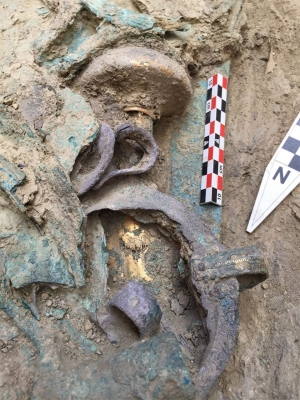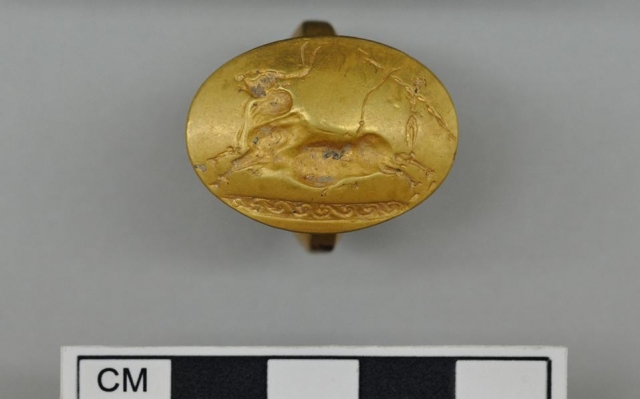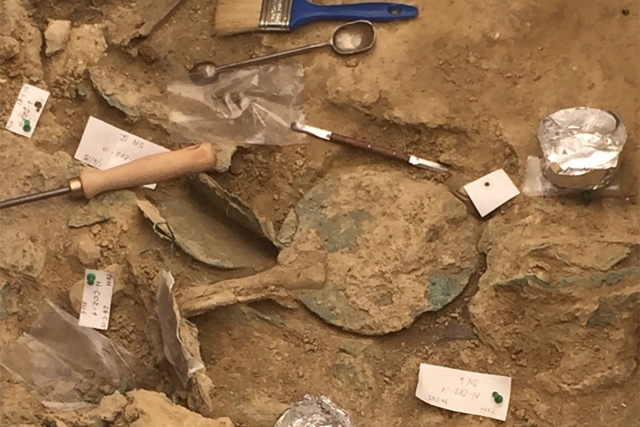A bronze sword with a gold-plated ivory hilt, gold signet rings, gold, silver and bronze wine cups, ivory pieces with scenes carved on them and over 1,000 semi-precious stones are just some of the rich gifts placed in the tomb of a warrior in the year 1500 BC to accompany him in the afterlife.

The tomb that dates back to the late Greek period and that has remained unaffected by treasure hunters has been discovered near the Mycenaean palace of Nestor at Pylos in the western Peloponnese by the members of an international group of archaeologists led by Jack L. Davis and Sharon R. Stocker of the University of Cincinnati. The researchers say they have discovered the most remarkable case of wealth demonstration in a prehistoric funerary monument in mainland Greece for the past 65 years.

Most of the 1,400 objects found, such as stone seals that depict scenes inspired by taurokathapsia* were strongly influenced by Minoan art and were made on the island of Crete. According to the archaeologists who have been working in the region of Pylos for more than 30 years, the deceased noble warrior, aged between 30 and 35 years, probably lived in the Acropolis in Eglianos, which was created and decorated on the Minoan model. They also add that the amount of decorations found in the tomb has overturned the theory that jewels were placed mainly in the graves of women.

The skeleton of the man has been discovered on the floor, in a wooden coffin. There was a weapon on his left side and semi-precious stones (amethyst, agate, gold, etc.), stone stamps and items for personal use on his right. A rare and exceptionally well-preserved gold chain was placed near his neck and an ivory slab that depicts a winged griffin, and a bronze mirror with an ivory handle near his legs. On the coffin, there were other gifts such as a large bronze washbasin, bronze strips, probably parts of his armour, pierced boar tusks and bronze jugs. They all scattered upon breaking the coffin and broke over the skeleton, thus hindering the course of excavations.

Although Nestor's palace was discovered in 1939 by Greek archaeologist Konstantinos Kourouniotis, the previous excavations led by Professor Carl Blegen of the University of Cincinnati were mainly concentrated on its later period, after the year 1300 BC until its destruction by fire about a century later. His colleagues Jack L. Davis and Sharon R. Stocker, however, studied the early period of the complex and discovered one of the four sides of the Mycenaean tomb on the first day of excavations in May this year. It is near tomb IV in Eglianos, which was broken up by treasure hunters.

The American School of Classical Studies in Athens of the University of Cincinnati conducted the excavations under the close supervision of the archaeological service of the Messinia district. They involved 45 scientists and students from foreign universities. In addition to the tomb, they have discovered the remains of small houses, a small part of the early fortification of the acropolis and a cesspool, which date back to the middle and late Bronze Age.
* Taurokathapsia (bull-leaping) is a ritual typical of the Minoan civilization of Crete in which an acrobat leaps over a bull. The celebration was dedicated to the god of the sea, Poseidon, and like in tauromachia (bullfighting), the acrobat did not kill the bull during the performance, as the aim was to demonstrate the courage and flexibility of athletes.